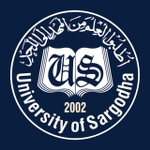Week 15
Propaganda Model:
The propaganda model seeks to explain media behavior by examining the institutional pressures that constrain and influence news content within a profit-driven system. In contrast to liberal theories that argue that journalism is adversarial to established power, the propaganda model predicts that corporate-owned news media will consistently produce news content that serves the interests of established power.
First introduced in 1988 in Edward S. Herman’s and Noam Chomsky’s Manufacturing Consent: The Political Economy of the Mass Media, the propaganda model argues that “the raw material of news” passes through five filters that ultimately shape the news audiences receive. These filters determine what events are deemed newsworthy, how they are covered, where they are placed within the media and how much coverage they receive.
The five filters are as follows:
Concentrated ownership, owner wealth and profit-orientation of the dominant mass-media firms. Corporate media firms share common interests with other sectors of the economy, and therefore have a real stake in maintaining an economic and political climate that is conducive to their profitability. They are unlikely to be critical of economic or political policies that directly benefit them.
Advertising as primary source of income. To remain profitable, most media rely on advertising dollars for the bulk of their revenue. It is therefore against the interests of the news media to produce content that might antagonize advertisers.
Reliance on information provided by “expert” and official sources. Elites have the resources to routinely “facilitate” the news-gathering process by providing photo-ops, news conferences, press releases, think-tank reports and canned news pieces that take advantage of the news media’s need for continuous and cheap news content. Business leaders, politicians and government officials are also typically viewed as credible and unbiased sources of information, jettisoning the need for fact-checking or other costly background research. This filter was clearly demonstrated during the run-up to the 2003 Iraq War, when the U.S. news media took official pronouncements at face value, refusing to investigate their veracity or accuracy.
Flak as a means of disciplining the media. Flak refers to negative commentary to a news story that can work to police and discipline journalists or news organizations that stray too far outside the consensus. Flak includes complaints, lawsuits, petitions or government sanctions.
An external enemy or threat. Manifesting as “anti-communism” during the Cold War period when Manufacturing Consent was originally published, this filter still operates, particularly in the post-9/11 political climate. This filter mobilizes the population against a common enemy (terrorism, energy insecurity, Iran…) while demonizing opponents of state policy as insufficiently patriotic or in league with the enemy.
The propaganda model suggests that corporate media ultimately serve to “manufacture consent” for a narrow range of self-serving élitist policy options. It allows us to understand the institutional pressures that ultimately color how activists’ causes and actions are covered. By understanding the limits of “objectivity” and the contradictions within corporate-sponsored journalism, we can develop media tactics that take advantage of these contradictions while also bypassing the filters of the corporate press, and directly appealing to the public through alternative forms of media. As Herman himself suggests, “we would like to think that the propaganda model can help activists understand where they might best deploy their efforts to influence mainstream media coverage of issues.”



